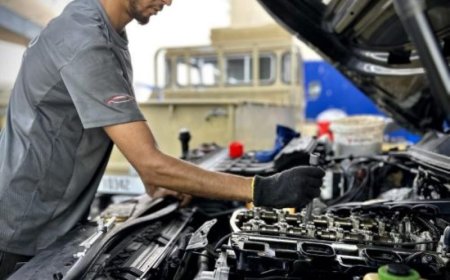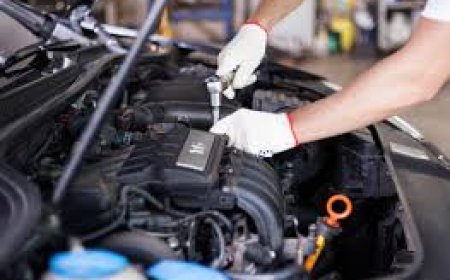10 Affordable Upgrades for a Quieter Commute

Long commutes can wear you downespecially when your vehicle is filled with the constant hum of road noise, engine vibration, and temperature fluctuations. Whether you drive to work daily or just want a more peaceful ride, there are budget-friendly upgrades that can help make your drive quieter, more comfortable, and less stressful.
In this guide, well walk you through 10 cost-effective ways to reduce noise, block out heat, and elevate your driving experience without breaking the bank. Some of these fixes are simple DIY jobs, while others offer big benefits for a small investmentespecially when using the best sound and heat insulation for cars.
1. Upgrade Your Door Seals
Old, worn-out door seals are a common cause of wind noise. If your cabin sounds like a wind tunnel at high speeds, deteriorated rubber might be the culprit.
What to do:
-
Inspect door and window seals for gaps, cracks, or looseness
-
Replace with thick, weather-resistant rubber seals
-
Add additional foam tape if needed for a tighter seal
Cost: Low
Impact: High on wind noise reduction
2. Install Floor Sound Deadening Mats
Your car's floor is a direct noise path from tires, the road, and even your exhaust system. Adding sound-deadening mats beneath your carpet is one of the most effective noise-reducing upgrades.
What to do:
-
Remove the carpet and lay down butyl rubber mats
-
Add a foam or MLV (mass loaded vinyl) layer on top for thermal insulation
-
Reinstall carpet for a cleaner, tighter feel
This layered approach is also part of the best sound and heat insulation for cars, improving both acoustic and climate comfort.
Cost: Moderate
Impact: Excellent for road and vibration noise
3. Add Acoustic Foam to Door Panels
Car doors are hollow and can echo or rattle, especially at higher speeds or when listening to music. Installing soundproofing inside the doors minimizes this effect.
What to do:
-
Remove the interior door panel
-
Install vibration-damping mats on the inner door skin
-
Add a thin layer of closed-cell foam before reinstalling the panel
Cost: Low to moderate
Impact: Great for mid-frequency noise and audio clarity
4. Treat the Wheel Arches
Wheel wells are direct noise conduits, especially when driving over rough or gravelly roads. Sound from your tires and road debris travels right into the cabin through these areas.
What to do:
-
Apply spray-on sound deadener inside the wheel arches
-
Alternatively, use rubber liners or adhesive-backed insulation pads
Cost: Low
Impact: Strong for tire and suspension noise reduction
5. Use a Dash Mat to Cut Reflective Noise
The dashboard reflects sound waves from your speakers and amplifies noise from the engine bay. A simple dash mat can soften reflections and improve cabin acoustics.
What to do:
-
Install a custom-fit dash cover with a soft top layer
-
Choose heat-resistant materials if parked in sunny areas often
Cost: Low
Impact: Medium for both noise and thermal protection
6. Soundproof the Trunk
If you drive a hatchback or SUV, your trunk is essentially open to the cabinand it can amplify noise from the rear wheels and exhaust.
What to do:
-
Line the trunk floor and sidewalls with sound deadening mats
-
Add MLV and carpet or foam padding for a finished look
This is one of the most overlooked upgrades and can drastically improve cabin quietness.
Cost: Moderate
Impact: High for rear-end noise isolation
7. Switch to Quiet Touring Tires
Some tires are built for performance or off-roadingbut theyre also loud. Swapping to quiet ride or touring tires can cut rolling noise dramatically.
What to do:
-
Choose tires labeled for low noise or quiet performance
-
Keep them properly inflated and rotated
Cost: Moderate (when replacing tires anyway)
Impact: High at highway speeds
8. Insulate the Roof with Thermal Deadening Mats
The roof is a major entry point for heat and rain noise. Adding insulation above the headliner reduces both.
What to do:
-
Remove the headliner
-
Apply sound deadening mats followed by heat-blocking foam
-
Reinstall the headliner cleanly
This two-layer system is also a key part of the best sound and heat insulation for cars in 2025.
Cost: Moderate
Impact: Excellent for weather-related noise and temperature regulation
9. Fix Rattles and Vibrations in the Cabin
Loose plastic panels, wire harnesses, or poorly mounted accessories can create annoying vibrationseven in well-insulated cars.
What to do:
-
Secure wires with zip ties and foam padding
-
Add adhesive felt between plastic parts
-
Tighten clips and screws behind the dash and console
Cost: Very low
Impact: High for removing buzzing and distractions
10. Use Heavy-Duty Floor Mats
Besides protecting your cars interior, thick rubber or carpet floor mats also dampen vibration and absorb noise from below.
What to do:
-
Choose thick, multi-layered mats that cover the entire floor
-
Pair with under-mat insulation for extra effectiveness
Cost: Low to moderate
Impact: Solid for vibration control and footwell comfort
Final Thoughts
A quieter commute doesnt have to mean a high-end luxury car or expensive shop installation. With the right approachand a few smart upgradesyou can significantly reduce noise, control heat, and make your daily drive a lot more enjoyable.
From replacing door seals to installing roof insulation and floor mats, these 10 affordable upgrades make a measurable difference. For best results, consider combining multiple layers using the best sound and heat insulation for carsdesigned specifically to tackle both acoustic and thermal issues in one solution.
Because when your car sounds better, feels cooler, and rides quieter, every mile becomes more enjoyable.







































